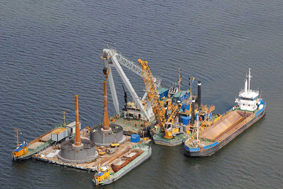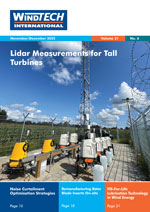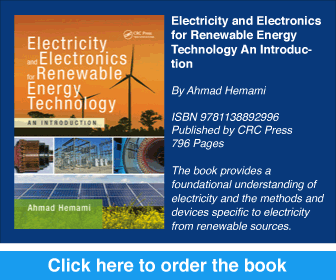Demonstrating a New type of Gravity Foundation which Reduces Manufacturing, Logistics and Installation Costs
 Since 2011 STX Finland has been leading the development of systematic ‘design-to-cost’ turnkey deliveries of foundations for offshore wind turbines, collaborating with offshore wind farm developers. The aim has been to develop new cost-effective foundations for offshore wind energy projects in the Northern Baltic Sea, where due to icy conditions monopiles are not very suitable except if blown into rock. To create a versatile structure for a variety of seabeds, STX has employed a gravity-based design that reduces manufacturing, logistics and installation costs and time. In August 2013, the first two of these innovative offshore foundations were produced and installed successfully in cooperation with Terramare Oy to serve as fairway marker substructures in Gävle, Sweden. This article describes the design approach used and the experiences gained in the Gävle project.
Since 2011 STX Finland has been leading the development of systematic ‘design-to-cost’ turnkey deliveries of foundations for offshore wind turbines, collaborating with offshore wind farm developers. The aim has been to develop new cost-effective foundations for offshore wind energy projects in the Northern Baltic Sea, where due to icy conditions monopiles are not very suitable except if blown into rock. To create a versatile structure for a variety of seabeds, STX has employed a gravity-based design that reduces manufacturing, logistics and installation costs and time. In August 2013, the first two of these innovative offshore foundations were produced and installed successfully in cooperation with Terramare Oy to serve as fairway marker substructures in Gävle, Sweden. This article describes the design approach used and the experiences gained in the Gävle project.By Dr Per Stenius, Jukka Mäkiranta, Juha Papinoja and Ilkka Rantanen, STX Finland Windenergy, Finland










